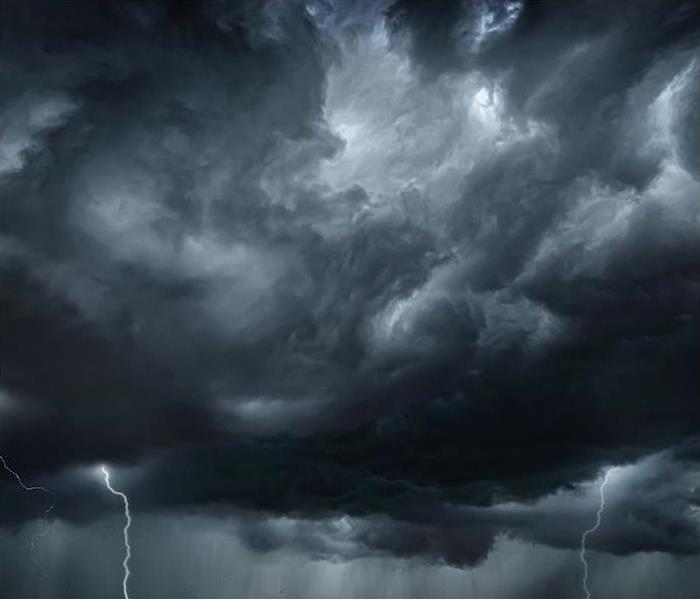How Does a Storm Safety Plan Help You Prepare For Severe Weather in Beacon?
6/13/2022 (Permalink)
 It's not just winter weather that can be threatening, make sure you have a spring and summer storm safety plan too!
It's not just winter weather that can be threatening, make sure you have a spring and summer storm safety plan too!
Severe weather can be frightening and dangerous. Not to mention the fact that there are around 100,000 thunderstorms throughout the United States every year, bringing heavy rain, strong winds, hail and flooding, all putting you and your home at risk.
In New York, we are often led to believe that the winter is the time for fear, and while those winter storms definitely cause concern, it’s the spring and summer storms that frequently do the most damage. Here in Beacon, the Hudson River runs right through town, putting property in this area at risk of flood damage.
Unfortunately, we can’t control the weather, but we can take action ahead of time to be prepared for when it happens.
Among the steps you should take, creating an emergency kit and forming a communication strategy with your family are two of the most important. We’ll discuss a variety of ways to help you prepare for storms, and ideally, reduce the impact that they have on you and your home or business.
As they often say “communication is key,” and this is especially true during dangerous weather. By knowing where your loved ones are, you can focus on yourself and everyone being safe in the home instead of being distracted.
Along with family communication, listening to your local officials for emergency alerts is important to stay informed about the current situation. Cellphones and television work well, but storms can knock out the power or a signal, so an NOAA weather radio is a good thing to have.
Finally, creating a communication strategy between the people in your household is crucial. This includes designating a room in the home to take shelter in, ideally in the center of the home with no windows nearby.
The art of being prepared goes far beyond proper communication and planning—it also requires you to have the right materials as well. Typically it’s smart to keep at least 72 hours worth of food, water and medical supplies (including prescriptions) in case of emergency. Be sure to include family pets in your prep.
If you want to be extra prepared, pack batteries, flashlights, clothes, blankets and a portable battery pack for any devices. Once you’ve gathered the items and packed them neatly, store the emergency kit in your chosen safe room so that it’s ready to use when necessary. Pet food, collar, leashes, paperwork and even their favorite bed or crate can be very helpful in emergencies.
After the extreme weather is over, you should take a few additional steps in order to stay prepared for the next event. Taking account of how your planning and strategy worked or didn’t work will allow you to improve it and stay ready.
Lastly, once it’s safe to exit the home with your family, take some time to check your property for damage.
While most damage is immediately visible, it’s a good idea to check your roof, windows, doors, and crawl space or basement for any signs of moisture or other damage indicators.
While we hope that your home is pristine, storms can do damage to any home, so knowing the next step is important. At SERVPRO of Western Dutchess County, you can rely on us to answer immediately and be there right when you need us.
If you discover storm damage to your home or business, you can count on SERVPRO to handle the restoration. We’re here 24⁄7 to spring into action—get in touch with us today.





 24/7 Emergency Service
24/7 Emergency Service